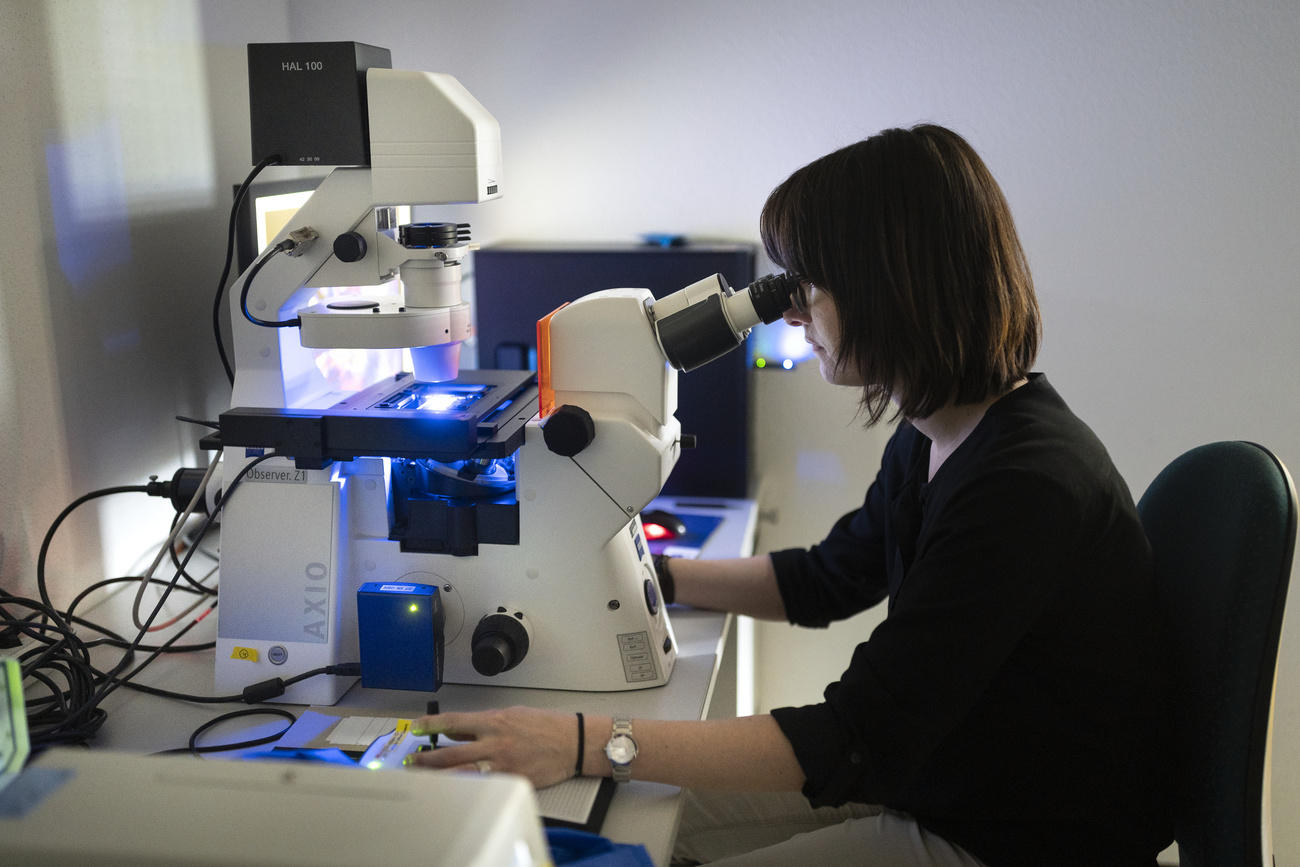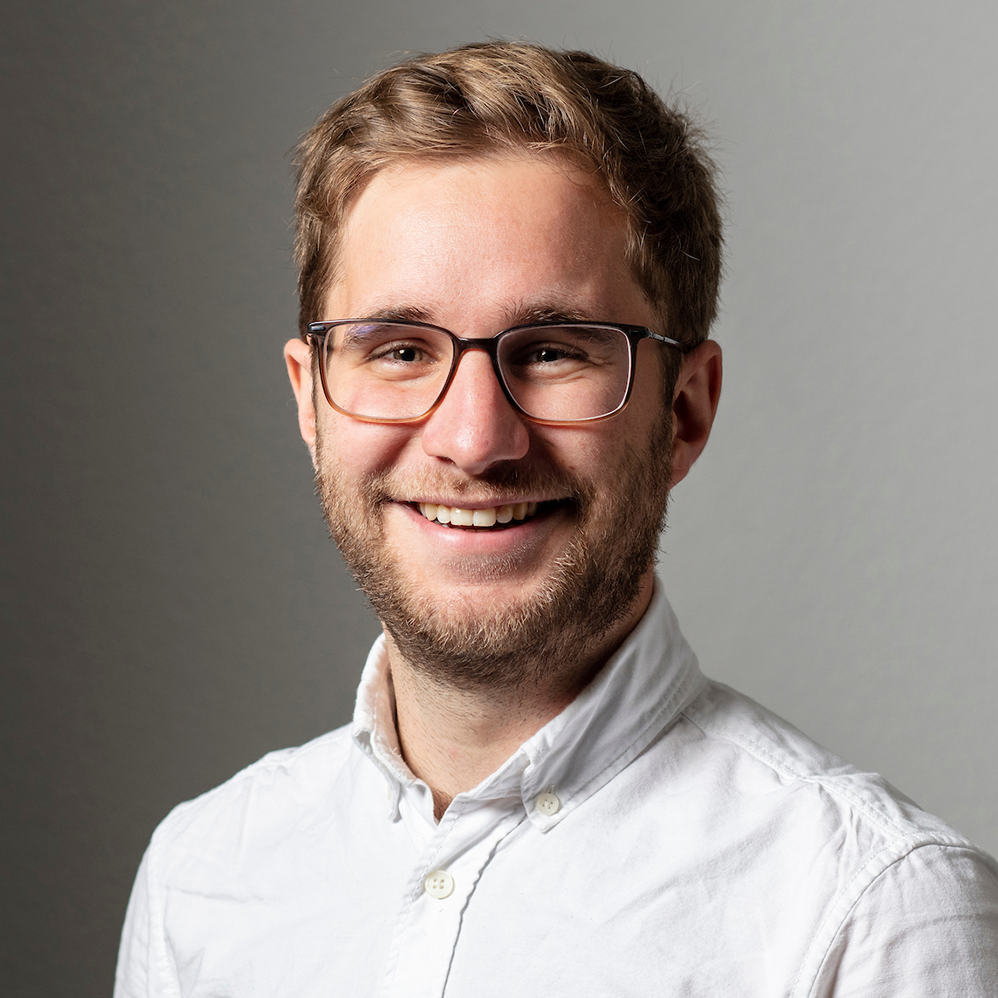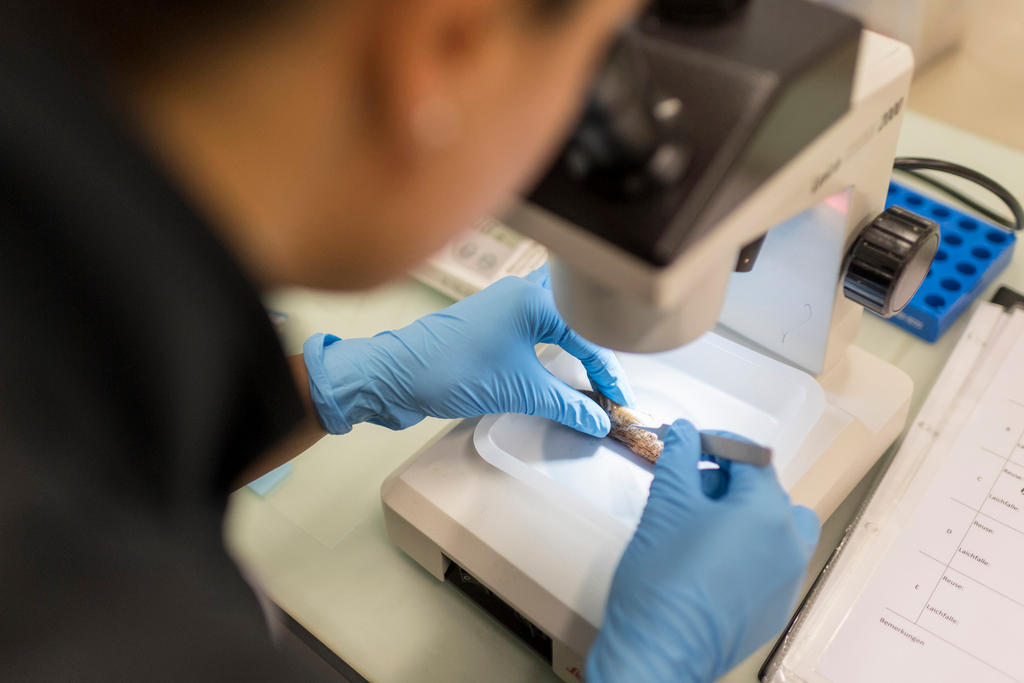Why more women than ever are doing PhDs in Switzerland

Women are catching up to men when it comes to pursuing doctoral degrees in Switzerland, just as they have done at both bachelors and masters levels.
At just over 51%, women make up the majority of students at Switzerland’s 12 universities, according to the latest figures (2019) from the Federal Statistical Office.External link The country has ten regular universities and two top-ranked Federal Institutions of Technology.
+ ETH Zurich remains the best university outside the UK and North America
This continues a trend that started in 2008, when women students outnumbered their male peers for the first time. Back in 1990, women made up just 38.8% of students.
A key reason for the change is the higher proportion of female students (now around 60%) at baccalaureate schools, the upper secondary schools that prepare for university in Switzerland, said Stéphane Cappelli, head of the students and exams in higher education section of the Federal Statistical Office. This is reflected in the universities’ intake, he said via e-mail.
Not everyone goes to uni
In Switzerland, a relatively low proportion of young people go to university. Vocational education and training is far more popular, with two-thirds of young people going this route. Men tend towards vocational qualifications, according to the Swiss statistical officeExternal link, with over 50% of federal diplomas and certificates going to men.
But PhDs?
There are therefore more women than men studying for bachelor’s and master’s degrees at university, but women are not yet in the majority when it comes to PhDs (the highest degree a person can obtain, often a platform for an academic/research career). Switzerland has the second-highest share of PhD holders among OECD countriesExternal link (after Luxembourg).
However, as Cappelli points out, women are catching up: they accounted for 36% of doctoral students in 2000, but almost 48% by 2019.
“We can see this ‘catch up’ phenomenon in particular in the two fields that already have a high proportion of doctoral students: natural science and medicine,” Cappelli told swissinfo.ch. “These two fields have become increasingly popular among women. So it’s this development…that explains the overall development in the number of women doing doctorates.”
Women are also doing more PhDs in areas which usually don’t generate so many doctorates, like social sciences, Cappelli observed.
Not so popular among women, according to stats office data, are PhDs in mathematical sciences (22% in 2019) and mechanical and electronic engineering (23.7% in 2019). This reflects Switzerland’s longstanding problem of attracting girls into STEM (science, technology, engineering and mathematics) subjects – a gender disparity commented on by the OECD in its latest assessmentExternal link of the Swiss education system.
+ An Indian student in Switzerland: my experience as a woman in science
Leaky pipeline
But after doing a PhD, many women drop out of academia (a phenomenon known as the “leaky pipeline”).
+ Women still struggle to make inroads into science
Only one in four professors are female, latest figures showExternal link. The difficulty of balancing family and academic life, as well as entrenched attitudes to women in science and research, seem to be major factors in the leaky pipeline, as we have previously reported.

More
Why talented women are disappearing from Swiss universities

In compliance with the JTI standards
More: SWI swissinfo.ch certified by the Journalism Trust Initiative














You can find an overview of ongoing debates with our journalists here . Please join us!
If you want to start a conversation about a topic raised in this article or want to report factual errors, email us at english@swissinfo.ch.